Red Mold: What You Need to Know
Red mold, like other types of fungi, grows in damp and humid environments. It is typically found on organic materials, such as wood, paper, and food. Red mold is not as common as other types of mold, such as black mold, but it can still be harmful to human health.
Types of Red Mold
Here are some types of red mold that may grow indoors and outdoors:
- Fusarium: Found in soil, plants, and decaying matter, it is pinkish-red and may cause allergies and respiratory issues.
- Aureobasidium: Common on damp surfaces like wallpaper, it appears as reddish-brown or black patches and can trigger allergies.
- Ustilago: Affects corn plants, forming dark-red galls. It impacts crop quality but is not directly harmful to humans.
- Red Bread Mold: Found on decaying plant material like bread, it is reddish-pink and used for genetic research without significant health risks.
- Red Mold Stain: Paecilomyces cause reddish or pinkish stains on building materials, indicating moisture damage. Prolonged exposure may lead to respiratory issues and allergies.
What are the Health Effects of Red Mold Exposure?
The health effects of red mold exposure vary from person to person. Some people may not experience any symptoms at all, while others may experience mild to severe symptoms.
The most common symptoms of red mold exposure include:
In some cases, red mold exposure can lead to more serious health problems, such as:
- Asthma attacks
- Hypersensitivity pneumonitis (HP) and a lung inflammation that can be fatal
- Allergic fungal sinusitis and a chronic inflammation of the sinuses
- Infections of the skin, eyes, and lungs
Who is at Risk for Red Mold Exposure?
Anyone can be affected by red mold exposure, but some people are more at risk than others. These include:
- People with allergies to mold
- People with asthma
- Children
- Older adults
- People with a weakened immune system
How to Prevent Red Mold Exposure Indoors
Preventing red mold exposure is crucial for maintaining a healthy indoor environment. Here are some effective measures to help prevent red mold growth and minimize the risk of exposure:
- Control moisture: Keep indoor humidity below 50%, use dehumidifiers, and fix leaks promptly.
- Promote ventilation: Ensure proper airflow, use exhaust fans, and open windows for fresh air circulation.
- Address water intrusion: Regularly inspect and fix leaks in windows, roofs, and plumbing.
- Insulate and seal: Prevent condensation by insulating pipes and sealing gaps and cracks.
- Clean HVAC systems: Regularly maintain and clean HVAC systems, replacing filters as needed.
- Dry wet areas promptly: Thoroughly dry wet spots within 24-48 hours to prevent mold growth.
- Keep a clean home: Regularly dust and clean, especially in moisture-prone areas.
- Maintain outdoor drainage: Ensure proper slope away from the foundation and clean gutters.
- Monitor indoor plants: Avoid overwatering, ensure drainage, and avoid high-humidity areas.
- Seek professional help: Hire mold remediation experts from FDP Mold Remediation for inspections and effective mold treatment.
Other Ways to Prevent Red Mold Growth
In addition to keeping your home dry and inspecting it regularly, there are other things you can do to prevent red mold growth. These include:
- Running fans to circulate air.
- Cleaning up spills promptly.
- Storing food in airtight containers.
- Avoiding using mold-promoting cleaning products.
How Our Techs Remediate Red Mold
FDP Mold Remediation provides comprehensive red mold remediation services that include the following steps:
- Assessment: Thoroughly evaluate the affected area and identify the source of moisture.
- Containment: Implement measures to contain and prevent the spread of mold spores.
- Mold Removal: Safely eliminate visible mold growth from surfaces.
- Discard Affected Items: Remove mold-damaged materials that can't be saved or restored.
- HEPA Vacuuming: Use specialized vacuuming to capture any remaining mold spores.
- Cleaning and Disinfection: Thoroughly clean and disinfect affected surfaces.
- Drying and Dehumidification: Employ dehumidifiers and air movers to dry the area.
- Post-Remediation Verification: Conduct a final inspection to confirm successful mold removal.
- Prevention Recommendations: Provide advice on preventing future mold growth.
Red mold is a fungus that thrives in damp environments and can pose health risks, particularly for individuals with allergies or asthma. If you discover red mold in your home, it is important to promptly clean it up. And our mold remediation company is always happy to make your property free from red mold again!





